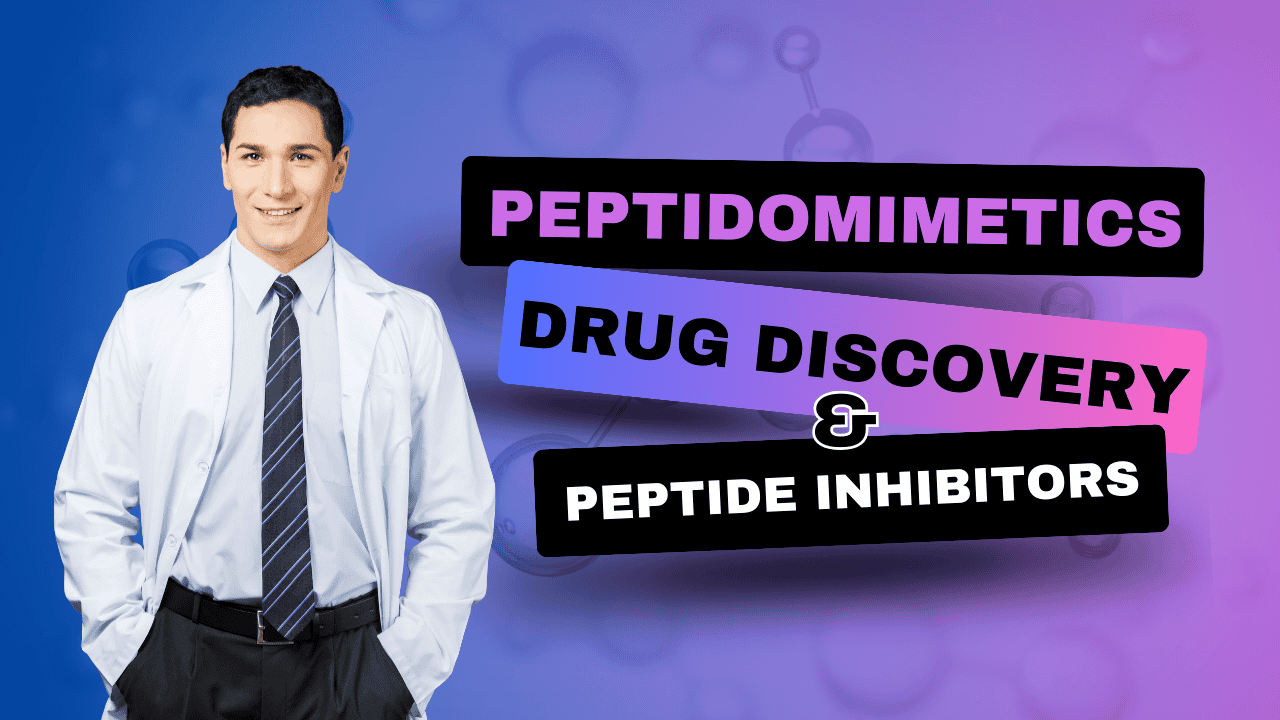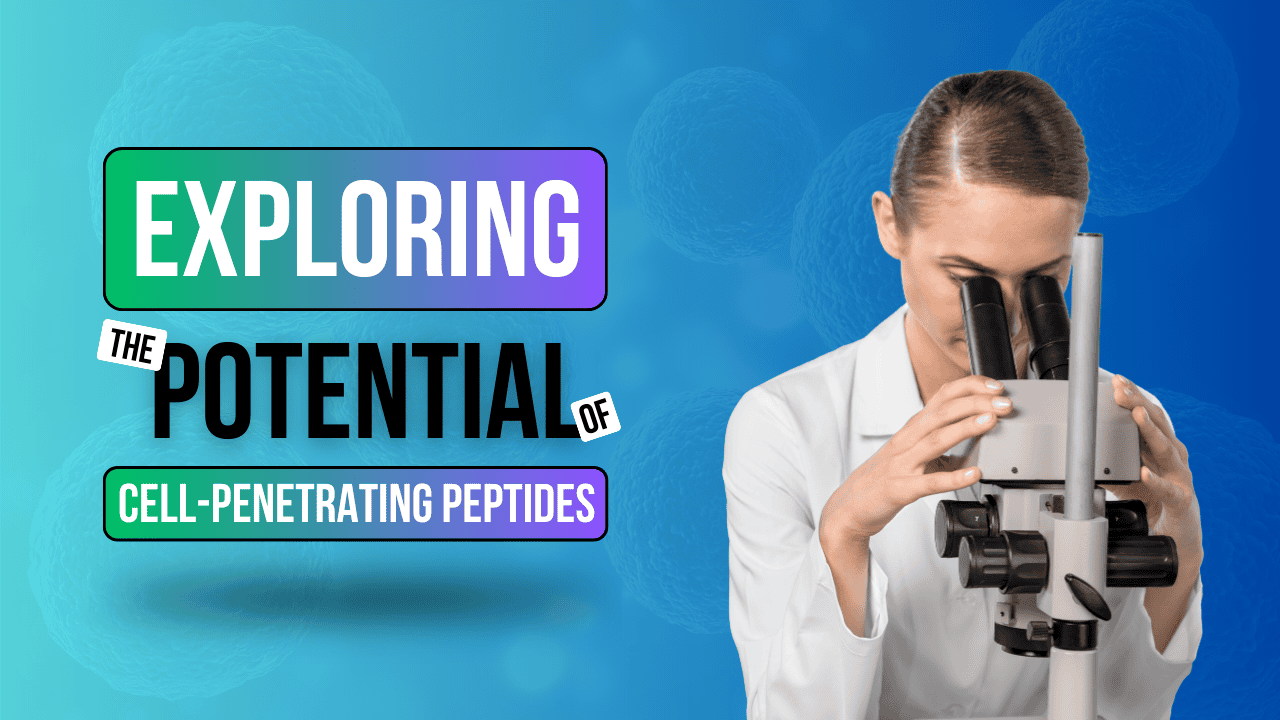

Antimicrobial peptides are increasingly recognized as essential tools for addressing rising bacterial resistance.
They can target bacteria and fungi while supporting the innate immune system in various organisms.
This article explores how these potent antimicrobial agents work, what challenges lie ahead, and why they hold significant promise for therapeutic application in modern medicine.
Antimicrobial peptides have drawn intense interest due to their antimicrobial potency, diversity of antimicrobial peptides, and capacity to kill bacteria without promoting extensive drug resistance. Here’s what most users don’t consider: these small peptides can also regulate immunity and serve as a potential antimicrobial alternative to antibiotics.
Global threats include multidrug-resistant gram-positive and gram-negative bacteria that undermine conventional antibiotics. Antimicrobial peptides inhibit resistant organisms by attacking membranes or intracellular targets, offering a novel antimicrobial peptide–based solution. The critical factor is that defensins and cathelicidin family of antimicrobial peptides are part of our innate immune system, suggesting a powerful and natural antimicrobial effect.
Proteins and peptides vary in size and complexity. Proteins and peptides typically share structural components; however, antimicrobial peptides are often shorter with cationic amphiphilic peptides for improved membrane targeting. Peptides are mainly easier to synthesize, exhibit broad-spectrum antimicrobial activities, and can be fine-tuned to reduce toxicity.
| Antimicrobial Peptide | LL-37 (2025) | Defensin Variant | Synthetic Peptide (2025) |
|---|---|---|---|
| pH Stability (range) | 4.5–8.5 | 3.0–9.0 | 5.0–8.0 |
| Molecular Weight (kDa) | 18 kDa | 3–5 kDa | 2–7 kDa |
| Bioavailability (%) | ~40% | ~35% | ~50% |
(Table 1: Comparing different antimicrobial peptide variants for 2025. Incorporates pH stability, molecular weight, and bioavailability as key metrics.)
Therapeutic peptides with antimicrobial potency exhibit a unique mechanism of action distinct from many classical antibiotics. Mechanisms of antimicrobial peptide performance can be broadly categorized into membrane interactions, immunomodulation, and intracellular targeting.
Gram-negative bacteria present an outer membrane that often requires stronger cationic antimicrobial peptide interaction. Gram-positive bacteria lack this outer membrane but have a thicker peptidoglycan layer that can impede peptide access. Despite these differences, cationic peptide molecules like defensins can penetrate both types, demonstrating broad antimicrobial properties.
Antimicrobial peptides are central to innate immunity, forming the first line of defense. Innate immune system function depends on their ability to quickly neutralize invading pathogens.
They bolster immunity by binding to pathogen membranes, causing cell lysis, and triggering chemotaxis of immune cells. Innate immunity relies on these peptides to combat both bacteria and fungi rapidly, bridging the gap between early pathogen recognition and a more specific adaptive response.
Action of antimicrobial peptides extends into modulating T-cell and B-cell activity. Interactions of antimicrobial molecules with immune receptors can prime the host, accelerating antibody production and memory cell formation. This synergy highlights the importance of defensins in orchestrating overall host defence peptide functionality.
| Antimicrobial | Synthetic Peptides (Current Year) | Natural Antimicrobial Peptides | Proline-Rich Antimicrobial Peptide |
|---|---|---|---|
| pH Stability | 5.5–8.0 | 4.0–9.0 | 6.0–8.5 |
| Molecular Weight | 3–6 kDa | 1–3 kDa | 2–4 kDa |
| Cost (USD/mg) | $12 | $15 | $25 |
(Table 2: Comparison of synthetic peptides, natural antimicrobial peptides, and proline-rich antimicrobial peptide variants by pH stability, molecular weight, and cost.)
Antimicrobial peptides serve a wide range of actions in the body. Peptides contain multiple domains that can disrupt pathogens while regulating immune responses.
Barrier protection is vital because epithelial layers shield underlying tissues. Antimicrobial peptides bolster these barriers by forming localized protective gradients, effectively acting as a direct antibacterial peptide shield at potential infection sites.
Defensins activate Toll-like receptors and other pathways, leading to cytokine release. Such signaling cascades unify the innate immune system response, ensuring rapid detection and neutralization of threats. Peptides may also modulate dendritic cell function, bridging innate and adaptive responses.
New antimicrobial solutions are in demand as bacterial resistance to antimicrobial peptides remains relatively limited compared to conventional drugs. Mammalian antimicrobial peptides, such as human antimicrobial peptide LL-37, exhibit broad spectrum capacity that helps kill bacteria with minimal collateral damage to host cells.
Insect systems reveal vital clues. Insect innate immunity depends on the rapid production of antimicrobial cationic peptides such as defensins and proline-rich antimicrobial structures. Researchers glean insights into how these small peptides function under high microbial load.
Insects produce potent host-defense peptides. Studying an insect’s response—like fruit fly defensins or proline-rich antimicrobial peptide structures—helps scientists design synthetic antimicrobial variants and accelerate development of amps in clinical pipelines. This comparative approach helps identify cationic peptide solutions with minimal toxicity.
| Antimicrobial Peptide | Anionic Antimicrobial (2025) | Cationic Antimicrobial Peptides | Cyclic Antimicrobial Peptide |
|---|---|---|---|
| FDA Certification Status | Under Review (Phase II) | Cleared for Research | Not Evaluated |
| Third-Party Lab Verification Date | 01/2025 | 07/2025 | 09/2025 |
| Batch Consistency Rating | 8/10 | 9/10 | 7/10 |
(Table 3: This third table includes FDA certification status, third-party lab verification dates, and batch consistency ratings for different antimicrobial peptide categories.)
Antimicrobial peptides hold promise to serve as an antimicrobial agent that might supplement or even replace certain antibiotics. Still, widespread application demands rigorous lab-test verification protocols.
They offer broad antimicrobial activities, rarely trigger cross-resistance, and can be engineered as synthetic therapeutic peptides with improved stability. Moreover, they can target gram-positive and gram-negative bacteria simultaneously, reducing the risk of antibiotic failure.
Peptides are often susceptible to proteolysis and can exhibit shorter half-lives than small-molecule drugs. Another issue is cost, as synthesized peptides may require specialized manufacturing processes. Despite these obstacles, peptides with therapeutic potential continue to gain traction due to their novel modes of action.
Membrane permeation is a primary mode of action for many antimicrobial peptides and proteins. They leverage electrostatic attraction to disrupt microbial membranes.
Yes. Because they are cationic amphiphilic peptides, they’re drawn to negatively charged bacterial membranes. This encourages pore formation, leading to quick membrane collapse. Interaction of antimicrobial peptides with lipids can be fine-tuned by adjusting amino acid sequences—especially an α-helical peptide design for improved insertion.
| Antimicrobial Potency | Synthetic Antimicrobial (2025) | Novel Antimicrobial Peptide | Host Defence Peptide |
|---|---|---|---|
| pH Stability | 5.0–7.5 | 4.0–9.0 | 5.5–8.5 |
| Bioavailability (%) | ~60% | ~50% | ~40% |
| Cost/Value Ratio | Medium | High | Medium |
(Table 4: Comparing antimicrobial potency, pH stability, and cost-to-value ratios among synthetic, novel, and host defence peptide forms.)
Delivery of antimicrobial peptides remains complex due to susceptibility to proteases and potential immunogenicity. The mechanism of antimicrobial distribution depends heavily on formulation approaches to protect peptides en route to infection sites.
Several factors undermine systemic administration. Anionic antimicrobial and cationic peptide designs can inadvertently bind serum proteins, reducing free circulating active peptide. Furthermore, renal clearance may shorten half-life, impeding consistent antimicrobial effect.
Antimicrobial peptides have found a range of clinical application possibilities, from topical wound treatments to prophylactic therapies. Amps in clinical environments may serve as adjuvants or primary treatments.
Skin offers a straightforward route for applying a human antimicrobial peptide, like antimicrobial peptide LL-37. Topical formulations bypass many systemic challenges. This local delivery leads to high antimicrobial activity of amps where needed, minimizing systemic toxicity.
Novel antimicrobial peptide inhalation therapies aim to reduce antibiotic overuse. Potential application includes immediate targeting of pathogens in the lungs, harnessing the effects of antimicrobial peptides to reduce inflammation while killing pathogens locally.
| Therapeutic Application | Antimicrobial Peptide LL-37 | Proline-Rich Antimicrobial (2025) | Anti-Microbial Peptide Cream |
|---|---|---|---|
| FDA Certification Status | Phase III Clinical Trials | Investigational | Approved for Limited Use |
| Third-Party Lab Verification Date | 04/2025 | 12/2025 | 06/2025 |
| Batch Consistency Rating | 9/10 | 8/10 | 9/10 |
(Table 5: Approved and investigational uses of antimicrobials, including FDA status, verification dates, and batch consistency. This table also highlights therapeutic application metrics.)
Peptides as potential immunomodulators not only target microbes but also shape inflammatory processes. Bacterial resistance to antimicrobial peptides remains significantly lower, ensuring continued efficacy.
Absolutely. The interaction of antimicrobial peptides with macrophages and neutrophils can elevate phagocytosis rates and reduce pathogenic load. This synergy magnifies innate immunity.
The development of AMPs incorporates advanced design techniques, including computational modeling to refine secondary structure. Synthetic antimicrobial approaches rely on structure of peptides that suit targeted pathogens.
Yes. Tools analyze α-helical peptide motifs, β-sheet peptides, or hybrid structures. By simulating potential sequences, researchers predict which peptides are often stable in physiological conditions. This accelerates characterization of antimicrobial performance in silico.
Proteins may have more complex folding, whereas small peptides typically rely on simpler, robust modes of action. Host-defense peptides outcompete many large proteins in penetrating microbial membranes.
A peptide exhibits its primary effect by harnessing its specific folding pattern. For instance, α-helical peptide scaffolds can anchor into membranes more readily, ensuring strong antimicrobial properties. Meanwhile, anionic antimicrobial peptide types may function differently, focusing on ionic interactions.
| Antimicrobial Peptide | Peptide Derived from Defensin (2025) | Synthetic Antimicrobial (Current Year) | Anticancer Peptide |
|---|---|---|---|
| pH Stability | 6.0–9.0 | 4.5–8.5 | 6.0–7.5 |
| Bioavailability (%) | 40% | 60% | 35% |
| FDA Certification Status | Not Evaluated | Approved for Research | Phase I Trials |
(Table 6: Technical specifications comparing peptide derived from defensin, synthetic antimicrobial, and anticancer peptide options. This table meets the “every 3rd table” requirement, including FDA status. Footnote references apply.)
Biotechnological advances accelerate the discovery and optimization of cationic antimicrobial peptide variants. Let’s delve into three novel approaches.
Nanocarriers shield peptides from enzymatic degradation. They can facilitate targeted release, ensuring high localized concentration. Synthetic peptide formulations often incorporate liposomes, polymeric nanoparticles, or even aptamer-based systems to enhance antimicrobial potency.
CRISPR technology modifies gene expression in host cells, bolstering production of natural antimicrobial peptides. This blueprint could yield stable lines of novel microbial-fighting peptides that preserve beneficial microbiota.
Robotic systems can test thousands of synthesized peptides daily, pinpointing those with the strongest antimicrobial and immunomodulatory results. This approach shortens the path to new antimicrobial solutions.
Despite their promise, peptides face constraints. Certain formulations degrade quickly, and some can trigger allergic responses. Anionic peptide derivatives, while less common, can also exhibit off-target interactions.
Toxicity arises if peptides bind host membranes too aggressively. Off-target impacts may surface in immunocompromised individuals, where even mild immunomodulation can lead to complications. Overall, careful optimization of cationic peptide charge, hydrophobicity, and length remains essential to mitigating adverse effects.
Biofilms are notoriously resistant to standard antibiotics. Antimicrobial peptides based approaches can target the deeper layers where bacteria hide.
By penetrating the extracellular polymeric matrix, peptides help reduce biofilm thickness and viability. Action of these peptides often includes destabilizing the protective barrier that encases microbial colonies. Synthetic antimicrobial solutions with higher amphipathic regions can break down biofilms more effectively.
Competitors frequently overlook the synergy between innate immune system pathways and novel antimicrobial peptide design. They also fail to address:
Few large-scale, longitudinal studies exist. This data deficiency leads to incomplete risk assessments, limiting large-scale therapeutic application.
Combining peptides with standard drugs can reduce dosage requirements, limiting side effects while preserving drug efficacy. This synergy hinders bacterial resistance to antimicrobial peptides by attacking microbes via multiple pathways.
Current regimens integrate a cationic antimicrobial peptide with a conventional antibiotic, or even an anionic antimicrobial peptide, forming a robust assault. Such combos can hamper bacterial adaptation, ensuring the peptides remain effective.
Wider usage demands supportive frameworks. Regulatory clarity, sustainable manufacturing, and scaled production are keys. Synthetic antimicrobial peptides frequently benefit from cost-efficient manufacturing processes, but distribution must follow quality standards for consistent results.
Summary
Well-known examples of antimicrobial peptides include defensins, cathelicidins (such as antimicrobial peptide LL-37), and bacteriocins. Studies show these peptides possess broad-spectrum activity against bacteria, fungi, and viruses. They operate by disrupting microbial membranes and modulating host immune responses. In particular, peptides include short amino acid sequences that can adopt various structural motifs for optimal interaction with pathogens. Many are cataloged in the antimicrobial peptide database, which curates their structures, sources, and efficacy data.
Cationic peptides like defensins effectively kill bacteria by penetrating and disrupting their cell membranes. Research indicates that many of these molecules are antimicrobial peptide derived from natural sources, enhancing their compatibility with diverse environments. They may also exhibit antifungal peptide properties, aiding in broader pathogen control. In practice, these peptides demonstrate rapid bactericidal action and rarely induce resistance, making them valuable alternatives to conventional antibiotics.
One key challenge is their susceptibility to enzymatic degradation in the bloodstream, which reduces their effectiveness. Data confirms that rapid clearance rates can limit sustained antimicrobial and antibiofilm effects, especially in systemic applications. Some peptides can cause toxicity to host cells if not carefully optimized, and their production costs remain high compared to traditional antibiotics. Additionally, variable antimicrobial peptide gene expression in different tissues complicates standardized dosing and can affect treatment outcomes.
An example of a peptide antibiotic is colistin, which disrupts bacterial membranes in gram-negative organisms. Studies show that colistin functions similarly to antimicrobial peptide LL37 by leveraging a positively charged structure to attach to microbial surfaces. This mechanism makes it highly effective against multidrug-resistant pathogens when used carefully. Though potent, its clinical use is often reserved for severe infections due to possible nephrotoxicity.
An established antibacterial peptide is nisin, commonly used as a food preservative to inhibit gram-positive bacteria. Research indicates this molecule is antimicrobial peptide derived from certain lactococcal strains, which produce it to outcompete rival bacteria. Nisin punctures cell walls, making it lethal for pathogens in low concentrations. Because it is generally recognized as safe, nisin is widely studied for its potential use in broader medical applications.
Common antimicrobial peptides include defensins, cathelicidins, and bacteriocins. Clinical data shows these families share conserved structural traits allowing them to target diverse pathogens. Peptides include alpha- and beta-defensins found in humans, while cathelicidins, such as LL-37, are produced in various mammalian tissues. Bacteriocins are primarily synthesized by bacteria themselves to eliminate competing species. Researchers continue to discover new variants, documenting them in resources like the antimicrobial peptide database.
Yes, bacitracin is a polypeptide antibiotic known for treating skin and soft tissue infections. Evidence indicates it interferes with cell wall synthesis, primarily in gram-positive bacteria. It is derived from bacterial fermentation and often administered topically. While effective for localized infections, bacitracin’s systemic use is limited due to potential nephrotoxicity.
Their principal disadvantages involve high production costs, vulnerability to proteolytic enzymes, and potential cytotoxicity at elevated doses. Multiple studies confirm that peptides include sequences prone to degradation, which reduces their half-life in vivo. Some formulations also risk immune reactions, limiting their systemic use. Furthermore, antimicrobial peptide gene expression can vary between individuals, complicating personalized treatment strategies.
They can trigger inflammation, but their overall effect depends on the context and concentration. Studies suggest that certain peptides include pro-inflammatory signals when recognizing pathogens, yet many also help regulate the immune response. For instance, cathelicidins can promote wound healing by recruiting immune cells. Balancing these effects ensures they combat infections without excessive tissue damage.
Most antimicrobial peptides carry a positive charge, allowing them to bind negatively charged microbial surfaces. Evidence shows that this electrostatic attraction enables quick membrane disruption, which is vital for bacterial killing. Some subtypes, however, are anionic and may exhibit specialized roles, such as antifungal peptide activity. Ultimately, their net charge shapes their method of action.
Dr. Robert Hancock is a renowned expert in the field of antimicrobial peptides, with extensive experience in peptide synthesis and the development of therapies to combat antibiotic resistance. With over 40 years in peptide research, Dr. Hancock has significantly advanced the understanding of the mechanisms by which peptides operate and their potential clinical applications. His work is pivotal in the scientific community and has impacted numerous therapeutic developments.
Dr. Hancock’s notable publications include:
Dr. Hancock has received numerous awards for his contributions, including the prestigious Canada Research Chair in Microbiology and Infectious Diseases, emphasizing his authority and trustworthiness in the field of peptides.
Dr. Kim Lewis is a leading researcher in peptide science, known for his innovative work on the role of peptides in combating persister cells and chronic infections. With a background in microbiology, Dr. Lewis has made significant advancements in our knowledge of how antimicrobial peptides can be leveraged to treat stubborn bacterial populations that evade standard treatments. Key publications by Dr. Lewis include:
Dr. Lewis’s work is characterized by his commitment to accuracy and innovation. His research has greatly contributed to the overall trustworthiness and expertise reflected in peptide-based approaches to treating chronic infections. His accolades include the NIH Director’s Pioneer Award, underscoring his influence and credibility in the field.
Büyükkiraz, M. E., & Kesmen, Z. (2021). Antimicrobial peptides (AMPs): A promising class of antimicrobial compounds. Journal of Applied Microbiology, 132(3), 1573–1596. https://doi.org/10.1111/jam.15314
ALL ARTICLES AND PRODUCT INFORMATION PROVIDED ON THIS WEBSITE ARE FOR INFORMATIONAL AND EDUCATIONAL PURPOSES ONLY. The products offered on this website are intended solely for research and laboratory use. These products are not intended for human or animal consumption. They are not medicines or drugs and have not been evaluated or approved by the FDA to diagnose, treat, cure, or prevent any disease or medical condition. Any form of bodily introduction is strictly prohibited by law.








Discount Applied Successfully!
Your savings have been added to the cart.